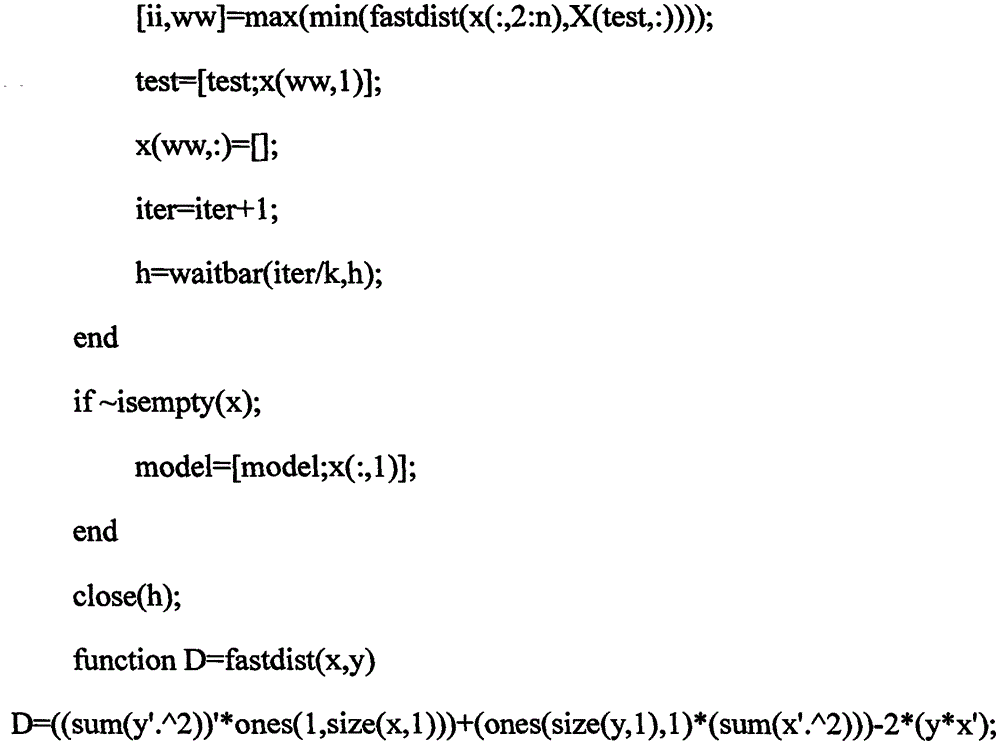Method for identifying producing area of Wuyi rock tea through combination of near infrared spectroscopy and trace element detection
A technology of near-infrared spectroscopy and trace elements, which is applied in the field of identification of the origin of Wuyi rock tea, can solve the problem that the detection data cannot represent all the key information of the traceability of the origin
- Summary
- Abstract
- Description
- Claims
- Application Information
AI Technical Summary
Problems solved by technology
Method used
Image
Examples
Embodiment 1
[0077] A. Collect rock tea samples from different origins
[0078] The national standard (GB / T 18745-2006) stipulates the scope of geographical protection of Wuyi rock tea, that is, within the administrative division of Wuyishan City, Fujian Province, the present invention is located in Wuyi Street, Chong'an Street, Shangmei, and Xingxia in the Wuyi Rock Tea Geographical Indication Protection Area. Samples were collected in 11 administrative areas including Village, Wufu, Langu, Xinfeng Street, Yangzhuang, Xingtian, Xiamei, and Wutun, and 3 sampling points were randomly selected in each administrative area (respectively A, B, C to be marked), a total of 33 sampling points, the sampling range basically covers the main production areas, and each sampling point takes 15 samples (respectively marked with A-1, A-2...A-15), and obtained 495 samples of Wuyi rock tea in geographical indication protected areas, and other counties and cities in Fujian Province except Wuyishan City (Jian...
Embodiment 2
[0124] Blind sample detection: The blind sample supervision team purchases rock tea samples from Wuyi rock tea farmers, monitors the steps of drying, greening, and finishing to ensure the origin of the rock tea samples. The above samples are used as geographical indications in the blind samples. Samples in the region; rock tea was purchased from Jianyang, Jianou, Wuyuan and other places as samples outside the geographical indication production area in the blind sample. The above blind sample and the modeling rock tea sample came from different manufacturers. Analyzing and testing personnel failed to know the origin attribute of the blind sample to be tested in advance, randomly selected several copies, tested, and then judged the origin attribute of the blind sample according to the method of the present invention, and checked with the blind sample supervision team to determine the recognition rate of the blind sample . 20, 60, and 100 blind samples were selected respectively,...
Embodiment 3
[0126] Using the same modeling data as in Example 1, the data segmentation uses the Duplex segmentation program, and uses the K-fold interactive verification to set up the least squares support vector machine (LS-SVM) model, neural network ELM and partial least squares (PLSDA) respectively. ) model, the near-infrared spectrum data remains unchanged, and the trace element data are spliced after the near-infrared data in the order of Cs, Cu, Ca, Rb, Sr, Ba, Mg, Mn, Ti, Cr, Co, Ni, Zn, and Cd. The recognition rates of the models are 91.3%, 87.8%, and 89.5%, respectively.
PUM
 Login to View More
Login to View More Abstract
Description
Claims
Application Information
 Login to View More
Login to View More - R&D
- Intellectual Property
- Life Sciences
- Materials
- Tech Scout
- Unparalleled Data Quality
- Higher Quality Content
- 60% Fewer Hallucinations
Browse by: Latest US Patents, China's latest patents, Technical Efficacy Thesaurus, Application Domain, Technology Topic, Popular Technical Reports.
© 2025 PatSnap. All rights reserved.Legal|Privacy policy|Modern Slavery Act Transparency Statement|Sitemap|About US| Contact US: help@patsnap.com



